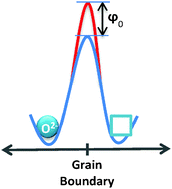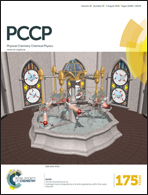Isn't the space-charge potential in ceria-based solid electrolytes largely overestimated?
Abstract
The effective ionic conductivity of polycrystalline solid electrolytes that conduct oxide ions or protons is known to be markedly below those of the corresponding single crystals due to substantial current obstruction across the grain boundary. Numerous studies have previously demonstrated that the ionic charge carriers deplete in the vicinity of the grain boundary to form a potential barrier at the grain boundary, which further impedes the current across the grain boundary. Hence an accurate estimation of the barrier height is essential to acquire a comprehensive and precise mechanistic picture of the ionic current in solid electrolytes. The values of the potential barrier height, i.e. equivalent to the equilibrium space-charge potential with the opposite sign, in prominent solid electrolytes such as ceria solid solutions are available in the literature and were determined exclusively from the ratio of the resistivity of the grain boundary to that of the crystal interior. Here I present the results clearly demonstrating that the resistivity ratio yields considerable overestimation of the barrier height even in relatively diluted solid solutions of ceria. These results imply that the space charge is unlikely the sole origin of the large current obstruction across the grain boundary in ceria-based solid electrolytes.


 Please wait while we load your content...
Please wait while we load your content...